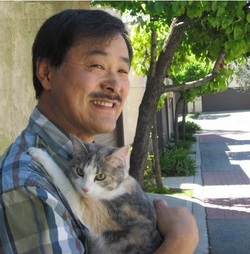
Seki, the author of Gardeners’ Pioneer Story, will introduce the genre of senryu. He will show how this 5-7-5 poem evolved from haiku, and how it came to be the poetic expression of the common people. He will introduce his book about the long, painful, and yet satisfying history of the immigrant Japanese gardeners. Finally, he will conclude by sharing several of the emotional, timeless senryu poems written by the gardeners themselves.
Senryu poetry evolved from haiku approximately 250 years ago. While haiku has been perceived as an art form for the elite, senryu has served to become the poetic expression of the common, working person. Rather than centering on the seasons, senryu focuses on the human predicament, and in the process forces the reader to smile, laugh, or perhaps shed a tear.
Sunny plans to illustrate the origin and early history of senryu.
1) The origin and early history of senryu
2) His research into the history of the Japanese in North America, and how they revealed their lives through poetry … History told via events and dates seems inanimate, but when told through the poetic words of the people who lived it, history comes to life and makes us feel that we are all the same – regardless of when we lived.
3) A summary of the history of Japanese gardeners … how they struggled with poor equipment, prejudice, and war, and how they rose to be highly respected workers who pushed their lawnmowers so that their children could go to college
4) Some of the warmest senryu poems written by gardeners
Sunny’s senryu name is “Sankyaku Seki.” “Sankyaku” means “tripod,” a sturdy symbol of the photography studio he and his wife operated for 30 years. Sunny has produced three art forms: photography, children’s books, and senryu, and so it is fitting that this triple is summarized in his name. Use of this type of pun is the typical way that senryu artists choose their names.
Sunny Seki is the teacher/director of Los Angeles-based Rasshin Senryu, and he has compiled two books that recount the history of Japanese in North America via the senryu that they wrote. Sunny is also the author/illustrator of three children’s picture stories that introduce Japanese folklore to children of all ages. His wife Judy is a high school math teacher, and they live in the Los Angeles area, where they have raised their nine children.
 RSS Feed
RSS Feed
